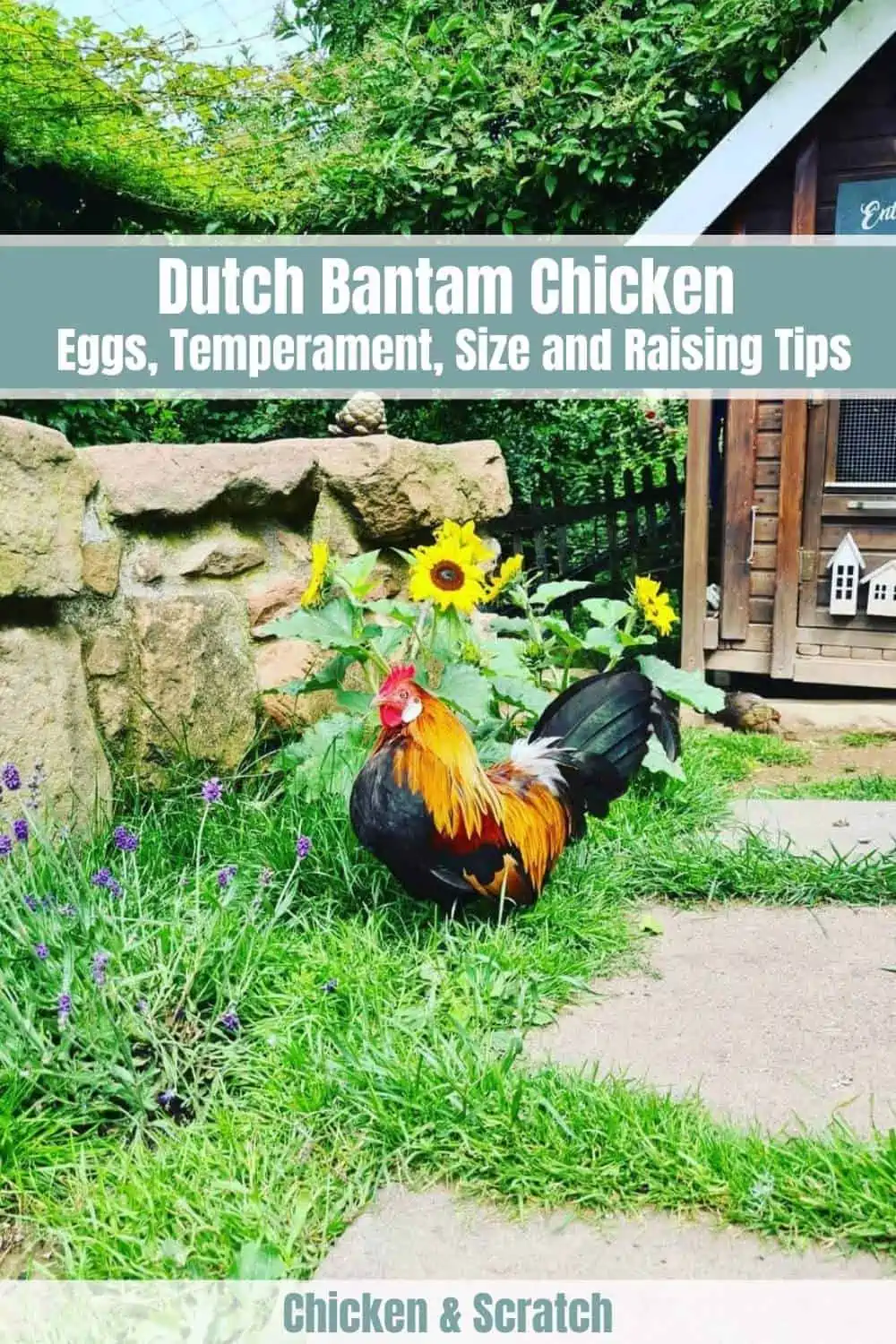Dutch Bantam chickens are an old breed among the fowl strains that are true bantams because there is no standard-size version for this strain. This bantam chicken is now quite famous for its ornamental purpose originating from the Netherlands around the 17th century.
These ornamental little feathery friends come in several varieties such as the Cuckoo, Golden Duckwing, Silver Duckwing, Partridge, Blue Duckling, Self Blue, Blue Golden, and many more.
The Dutch Bantam fowls are not the best breed for egg and meat production from the poultry, but they are famous for being beautiful pets and show birds. These small chickens are friendly, and kids love them because they are easier to handle than any standard-sized bird. Dutch Bantam breed of chickens perform average in egg-laying but possess exceptional show qualities.
This article will cover
- Dutch Bantam Chicken Breed Background and History
- Dutch Bantam Chicken Standard and Appearance
- Dutch Bantam Chicken Personality and Temperament
- Dutch Bantam Egg Laying Ability
- Dutch Bantam Health Issues and Care
- 3 Tips for Raising Dutch Bantam Chickens
Dutch Bantam Chicken Breed Background and History
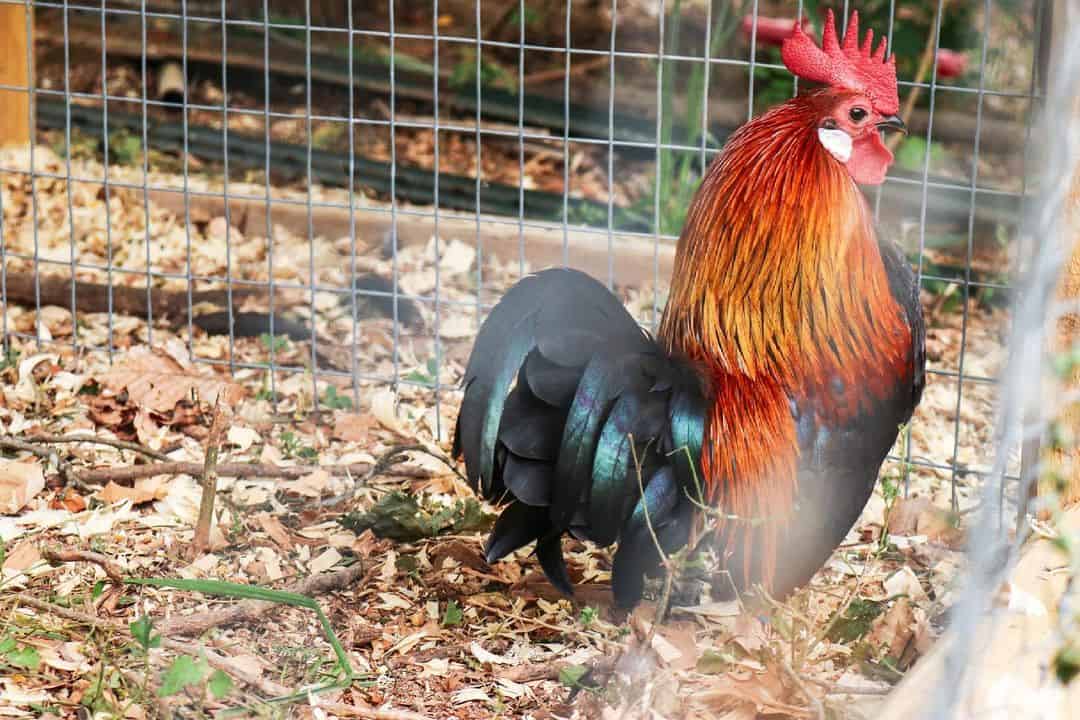
There were claims that the Dutch Bantam chicken breed originated in the Netherlands. Still, historical documents from Europe revealed that sailors were likely to import them.
The Dutch Bantam fowls probably came from Holland in the 17th century acquired on the Bantam Island, which is, at present, part of Indonesia. There were claims that the original ancestors originated from the most primitive domesticated chickens from Indonesia’s jungle fowl.
The Dutch sailors took this breed’s predecessors from the East Indies to supply eggs and meat during their voyage. The seamen discovered that the bantam chicken’s size is suitable for providing them food in the congested conditions of the ship. Most likely, the sailors brought the Bantam home with them to Europe to carry on breeding for their families.
Thanks to the Dutch peasants’ for the Dutch Bantam fowl strain’s development in Holland. During this time, the peasants had to provide any of the big eggs to the lord of the manor. However, with the Dutch Bantam hens’ small eggs, they were able to keep all of the eggs for themselves.

The Dutch Bantam breed of chickens reached the US around the mid-1900s after World War II. These birds died because of the lack of interest of the American chicken raisers the first time they were imported into the country. These little chickens made their way once again into the US soil in the 1970s, where they were now acknowledged with gusto.
The Dutch Bantam Society began in 1986. Then in 1992, the first two color varieties were recognized in the Standard of Perfection. And four other color variations were also acknowledged later, totaling six color varieties recognized by the US.
The Standard of Perfection with the American Poultry Association accepted and identified the Dutch Bantam chicken variety Black, Cream Light Brown, Blue Cream Light Brown, Light Brown, Blue Light Brown, and the Silver Dutch Bantams.
The Dutch Bantam now continues as the most famous poultry sort within its home country, the Netherlands. The breed is also renowned in the United Kingdom and Germany. Its popularity grows in the USA and South Africa promptly. This bantam chicken is increasing its fame as exhibit poultry worldwide. Another name for the Dutch Bantam chicken is Hollandse Kriel.
Dutch Bantam Chicken Standard and Appearance
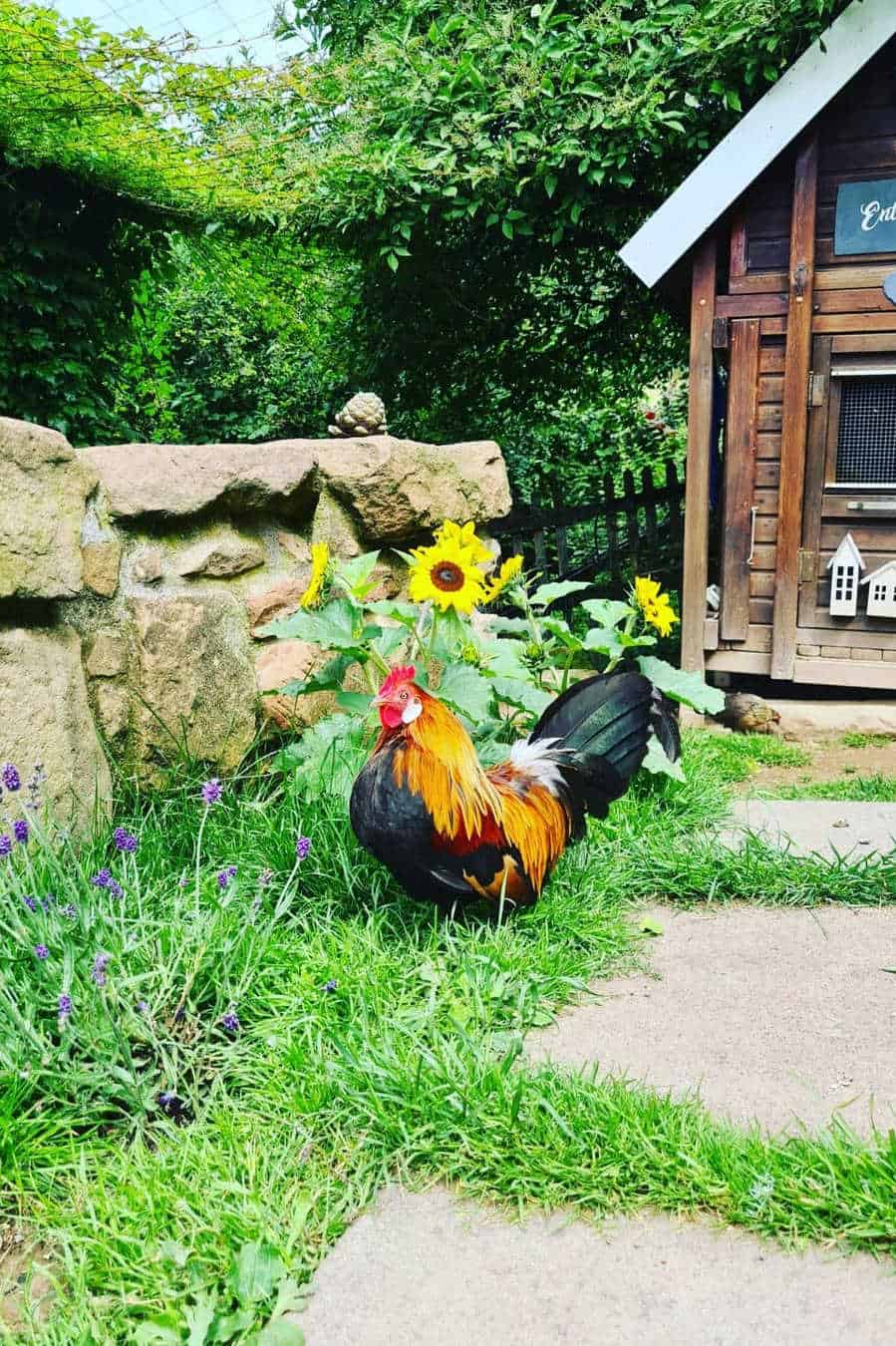
Clearly from its name, Dutch Bantam is indeed a petite fowl. This strain is the smallest chicken breed everywhere. The Dutch Bantam rooster weighs close to 20 ounces, while the Dutch Bantam hens are around 18 ounces.
The Dutch Bantam chickens have a high full breast and upright little fowls with short backs. This breed’s wings are practically large and long stocked close to its body. Because of their lightweight and rather large branches, the Dutch Bantam birds are excellent fliers.
The chickens in this breed have full tails that are well-spread with fully-developed sickles. These fowls also have a bright red colored single comb with five well-defined and straight points. The earlobes of Dutch Bantam chickens are white, small, and oval-shaped.
If you look closely, you could observe that the Dutch Bantam wattles are medium-sized, broad, and red in color. Also, when you have a Dutch Bantam fowl in your coop, you are familiar with their slate blue-colored thigh and featherless legs with four toes. Dutch Bantam’s skin color is also white.
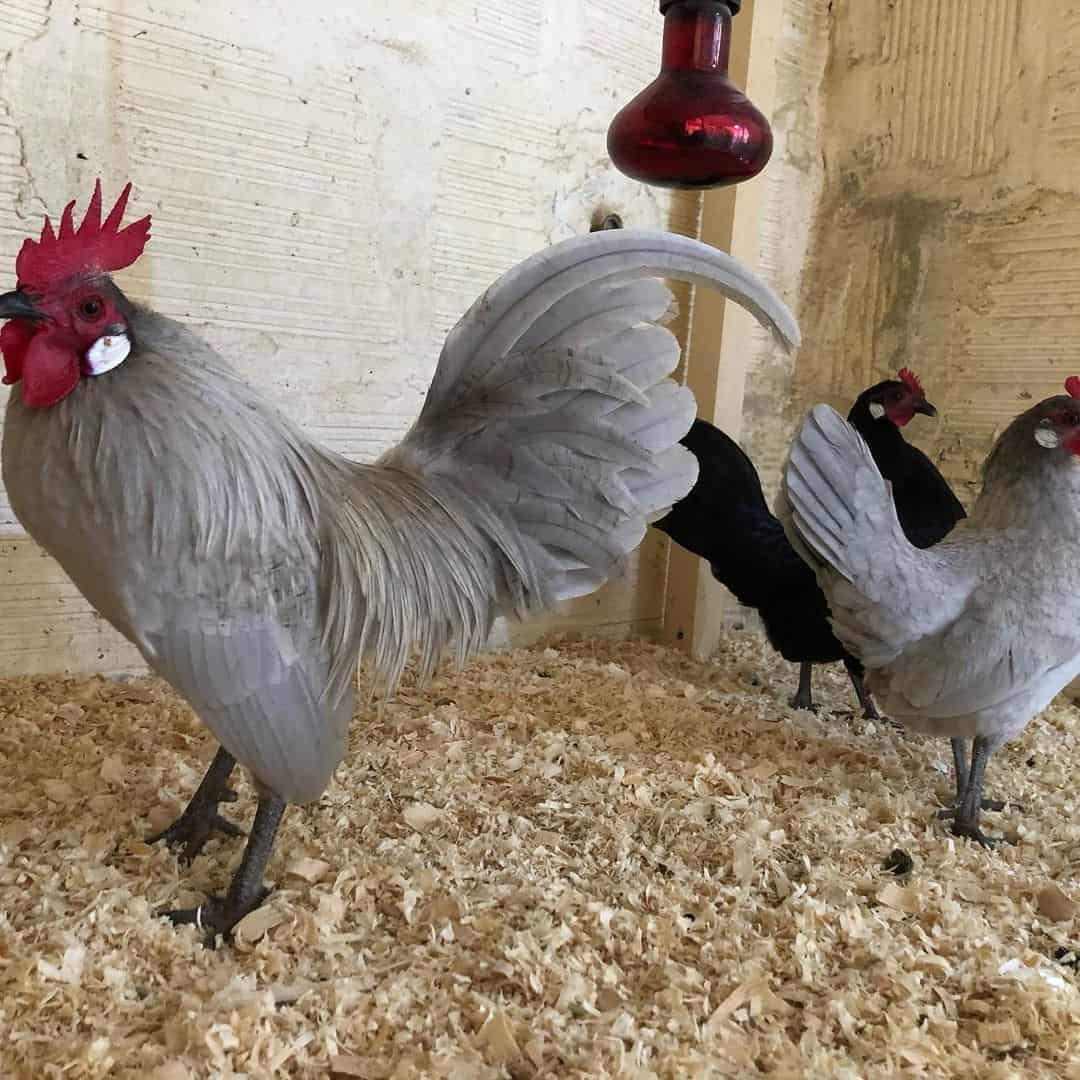
It’s also easy to observe that the Dutch Bantam short beak is slightly curved but firm. The original type of Dutch Bantam chicken’s plumage is that of a Partridge pattern. However, there are now several color varieties available with varied kinds of plumage as well.
The Dutch Bantam rooster holds its body in a dignified position with a pleasant parade of the breast region. What helps boost their appearance are their hackle and saddles that overflowed with feathers.
You can also behold the rooster of Dutch Banham chicken’s elegant tail highlighted with long, cardioid slanted sickle feathers that are arrayed in the area of their attractively spread tails. The Dutch Bantam hens also display a great stance of a well-displayed breast. Its tail is also pleasantly spread to emphasize its body.
The APA acknowledges six colors in the Dutch Bantam chickens: Black, Silver, Light Brown, Cream Light Brown, Blue Cream Light Brown, and Blue Light Brown.
Dutch Bantam Chicken Personality and Temperament
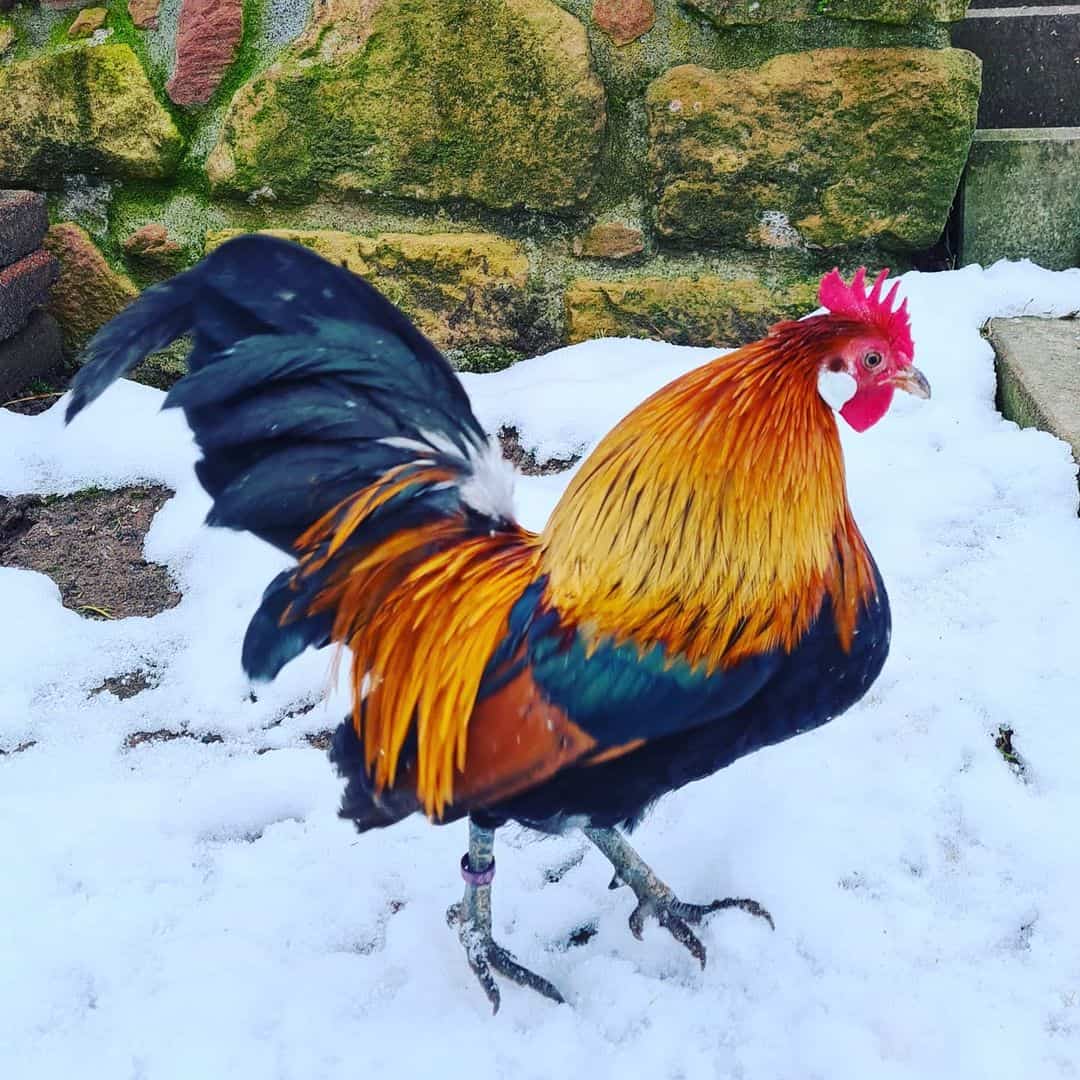
Who wouldn’t want to breed such cute and, at the same time, friendly adorable Dutch Bantam chickens? Their attractive small appearance plus docile nature make them favorable for backyard breeders and beginners, youngsters, and even the youngest of children.
If you are a Dutch Bantam breeder, then you’re familiar with the high praises of your sweet and docile chickens. It’s vital to note that when the Dutch Bantams have frequent interaction with humans, these birds become more affectionate with their owners or handlers. Thus, they are perfect pets for kids.
On the other hand, Hens can be an admirable and doting mother since they have the inclination to go broody. These small hens are good layers of smaller white eggs. The female Dutch Bantams are excellent brooders, setters, and protective mothers.
The chicks are very dynamic and good fliers because of their lightweight but with enormous wings. More so, these chickens perform very well in confinement.
Hobby farmers and chicken breeders want to raise these bantam chickens as their prime choice because of their docile personality plus their reasonable ability to lay eggs. In general, these chickens are very easy to handle and friendly in disposition.
Even beginners would prefer to raise thee chickens as they are pretty simple to breed. However, this breed does not do well in severe north winter seasons. These birds’ small size and their comb-type make them not a cold hardy breed. Breeders should take good care of these bantams during colder weather or winter seasons.
The Dutch Bantams are also well-suited and favorable for youngsters to take care of and breed because of their sweet nature. The young birds can be flighty but, in general, are easily tamed and handled even by small kids.
It’s important to note that sometimes, there are mean Dutch Bantam roosters sporadically. Breeders are discouraged from breeding from the mean Dutch Bantam line so as not to tolerate mean birds.
Dutch Bantam Egg Laying Ability

An average bantam hen lays approximately 200 eggs annually. But some bantam breeds can only lay as much as 50 eggs in a year, like the Japanese, Sebright, and Pekin Bantam.
What’s pleasant about bantam breeds is that once the hens begin laying eggs, they will continue to produce eggs every other day for four to six months until they shed their feathers or what’s called molting. As the mother hens are smaller than the standard hen size, the eggs are smaller than the average eggs.
On the other hand, Dutch Bantam hens lay eggs on an average of 150 to 160 eggs a year from a single hen. The eggs have a higher chance of becoming fertilized when the rooster is nearby.
The broody Dutch Bantam hens start sitting on their eggs to keep them warm for around 21 days until hatching. The hens will then hold the Dutch Bantam chicks under their wings until the central feathers grow to keep them warm.
The female Dutch Bantams produce a good egg for a bantam. The egg’s size is similar of a pheasant egg.
More so, these hens lay eggs every other day and are excellent setters and brooders. But because of the Dutch hen’s size, they can only adequately clutch seven or eight eggs altogether. Eggs start to crack on the 19th day and hatch immediately when chicks are in good health.
The Dutch Bantam chicks are great whether hatched inside an incubator or under their mother. The hens, which are usually broody, are noted to be very focused on their chicks which are also active and alert right after hatching.
Dutch Bantam Health Issues and Care
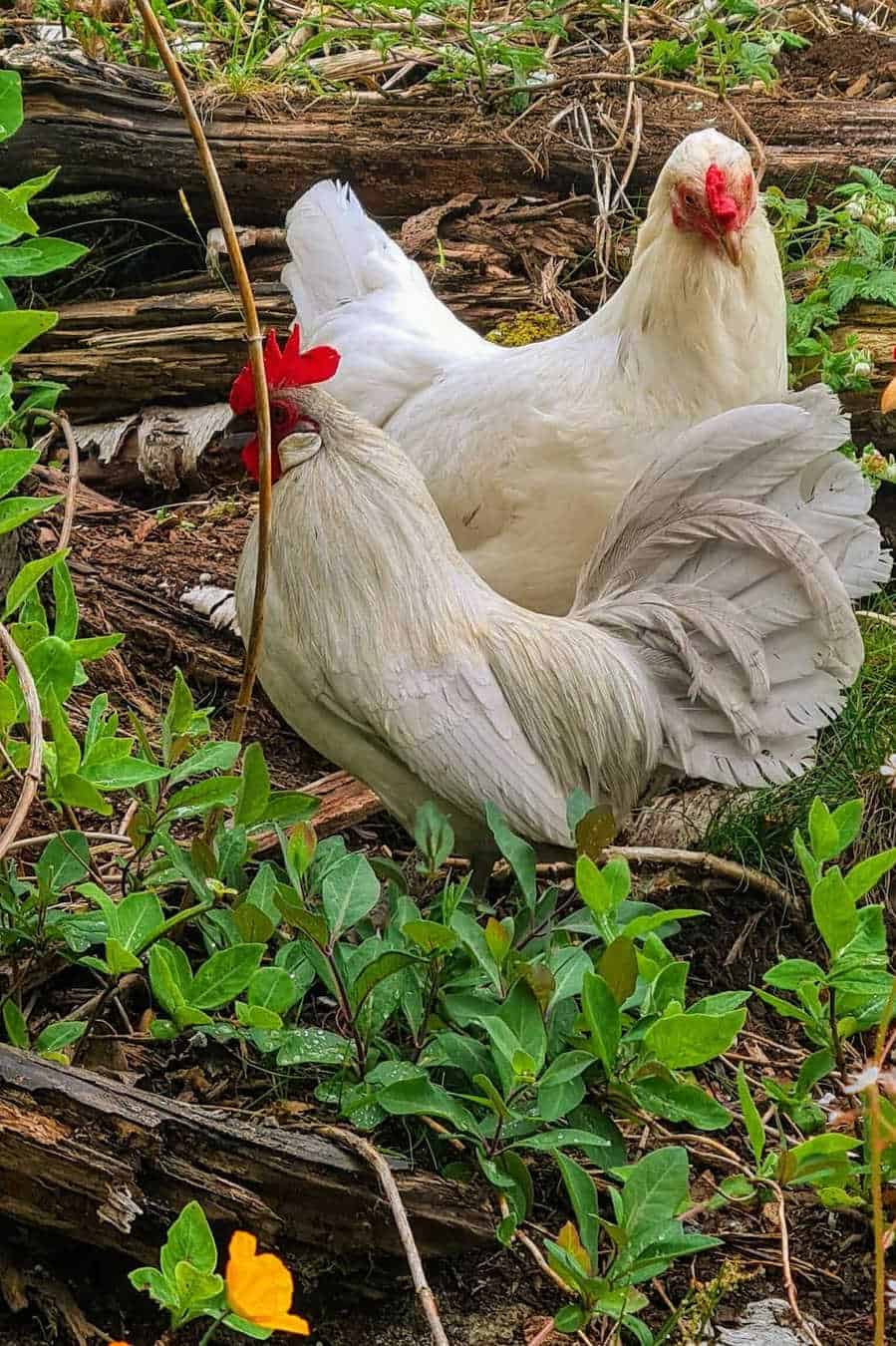
You’d be surprised that even though Dutch Bantams are small and delicate in appearance, they are, in fact, hardy chickens. Bantam chickens, in general, are as healthy as their standard equivalents, although there are a few exceptions. The bantams are most likely to have feathered feet, and it’s a beneficial purpose for a fowl to have.
Unfortunately, it would also mean that your chickens’ foot plumes can quickly end up coming about crusted-over and stained, significantly when their pen is always damped. Bantam breeders should always be on the lookout for damp spots to maintain their chickens’ health.
It’s a must to provide a foot bath if your bantams’ feet always end up damp and dirty. How do you do the foot bath? Stand your chicken in warm water and pull cautiously at the plumes to take off the grime.
The foot dirt or grime can begin other health issues. The dirt can make the plumes break quickly and can start bleeding. More so, your chickens will be susceptible to flaky leg mites. That’s why it’s crucial to check the poultry regularly for these kinds of concerns.
The Dutch Bantam can also be susceptible to internal and external parasites far more harshly than the standard chickens. That’s why it’s also critical to treat parasites immediately to keep your chickens healthy all the time.
For colder weather, ensure that your chickens have protection from the cold. Get your coop ready to save your chickens from harm during the wintertime so that their large single combs won’t get frostbite.
Additional care will be more beneficial to any chicken breed, feeding them proper nutrients and spacing good housing facilities for your feathered friends. Monitoring regularly on the chickens’ health for any onset of diseases or illnesses will prevent serious problems later on.
It will keep them in pristine shape. Most importantly, take necessary steps as soon as possible when you observe something unusual. And vaccinate your poultry regularly while keeping consistent contact with your local vet.
3 Tips for Raising Dutch Bantam Chickens
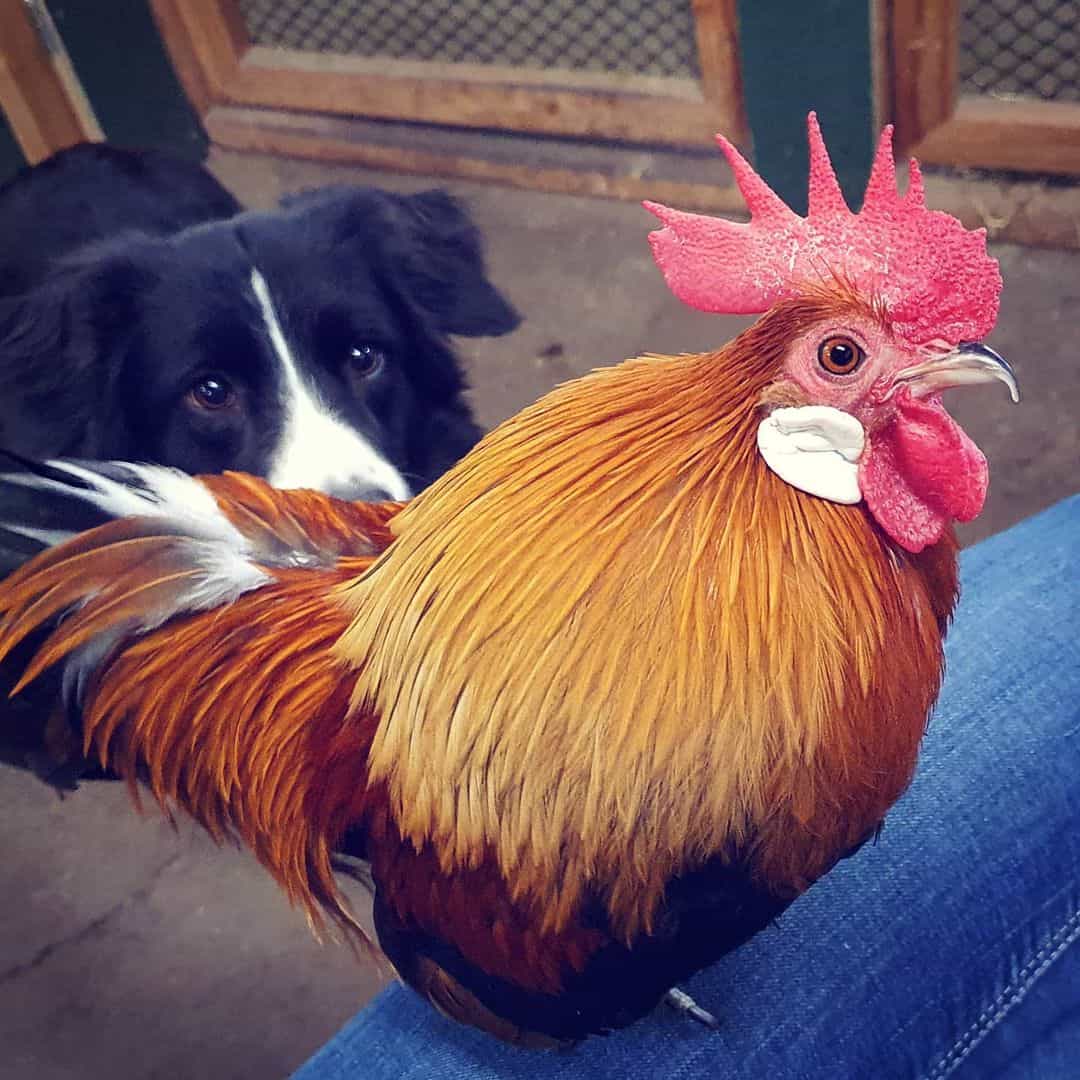
Nutrition
All chicks should begin with a good quality supply of chick starters from hatch to around 12 to 14 weeks old. Then switch to laying feed when the chicks are approaching adulthood. Though you can feed your Dutch Bantams with laying pellets, the crumbled form is a better option. The laying pellets may be too big for the tiny bird.
Like all chicken breeds, feeding the Dutch Bantam with excellent quality and nutritious food is most important. Great supplements and food helps any chicken grow better, sustain their health, and produce more.
It doesn’t matter if you feed your chickens some commercial feeds or something you prepare of your own as long as they are nutritious for your fowls. More so, never let your poultry eat contaminated meals. Plus, give them sufficient clean and fresh drinking water as per your chickens’ demand.
Coop
One benefit of raising bantams is the space required is less demanding than a standard chicken’s condition. The Dutch Bantams will do well in both free-range environments and confinement. But, a free-range system will lessen your feeding cost plus will help you produce better quality products.
It’s not actually a good recommendation for the Dutch chickens to go free-range because of their size, making them very susceptible to predator’s meals. However, a covered run or tractor is going to be the safest haven for these little chickens.
A 5 square feet per chicken is most recommended for the Dutch Bantam covered run or tractor. More so, have a sharp-eyed rooster to keep an eye for potential predators like the hawk to his ladies if you do prefer free-ranging your chickens.
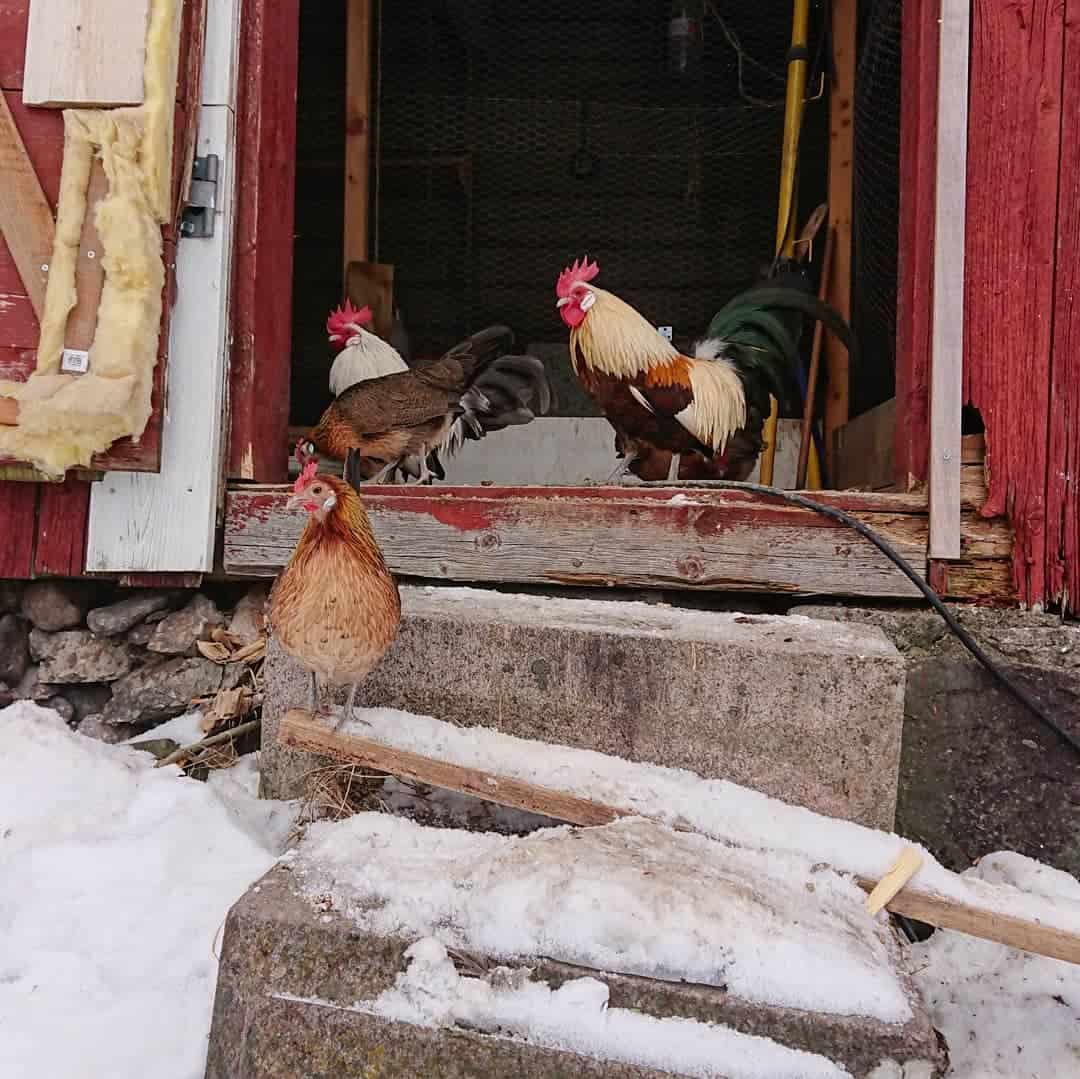
Constructing a suitable housing facility for your Dutch Bantam chicken is vital. The chickens’ hose will not only keep them healthy. Still, it will also protect them from severe weather conditions and all types of predators. That’s why it’s critical to construct a comfortable, secure, and suitable housing system for your fowls.
The type of house depends on the breeder’s budget and the availability of materials to use. You can construct with low cost and simply available materials like wood or bamboo or a complete concrete arrangement as long as the house is comfortable and secure for your chickens.
A sound ventilation system is also a must in building the chicken’s house because it eliminates unsafe gases inside the house. More so, the ventilation will keep the chickens healthy.
Furthermore, don’t forget to make the house easy to clean. There should be an adequate amount of fresh air and light in the containment. The Dutch Bantams would need not more than 3-4 square feet of space. And arranging more space per chicken will be suitable for these ornamental birds.
Breeding
It is very natural for the Dutch Bantam chickens to breed like the other domestic chicken breeds. These Dutch chickens breed without difficulty and lay enough fertile eggs for hatching. One mature rooster is adequate for up to 10 hens.

Conclusion
The Dutch Bantam chicken breed is a true bantam as it didn’t originate from a lineage of standard-sized chickens. APA recognizes it as the smallest bantam chicken breed.
This chicken breed is not winter hardy, so breeders should maintain chicken coops protected during winter seasons. Fenced pens are something to ponder on when you want to breed Dutch Bantams because these chickens are excellent fliers.
For hobby farmers and poultry keepers, Dutch Bantam fowls are an incredible choice to breed because of their egg production and their friendly nature. The Dutch chickens are calm, alert, and proud little feathered creatures that wander about raising whether confinement or free-range.
One of the most important things to consider when you want to breed Dutch Bantams is being cautious about purchasing them. Some claimed it’s pure Dutch when in fact it came from the lineage of Old English Game bantams in their past. There was not a good result of the hybrid. Thus it was avoided.
When you consider breeding a Dutch chicken, contact a breeder who is an expert or has experience in raising this breed. You can also ask for the list of breeders near your area who breeds pure Dutch from the Dutch Bantam Society.


Joseph Hudson has been raising chickens for over 15 years. In 2018, he completed the Agriculture & Natural Resources program at Mt. San Antonio College. He currently raises over 1400 chickens on his 7.5-hectare farm. He keeps sharing his experience on raising healthy and happy chickens on Chicken Scratch The Foundry.

